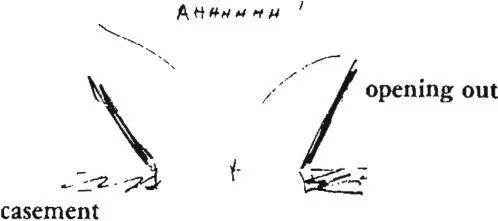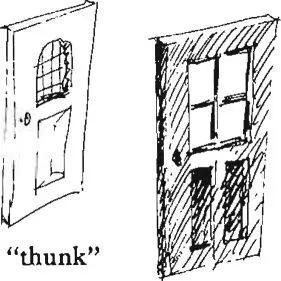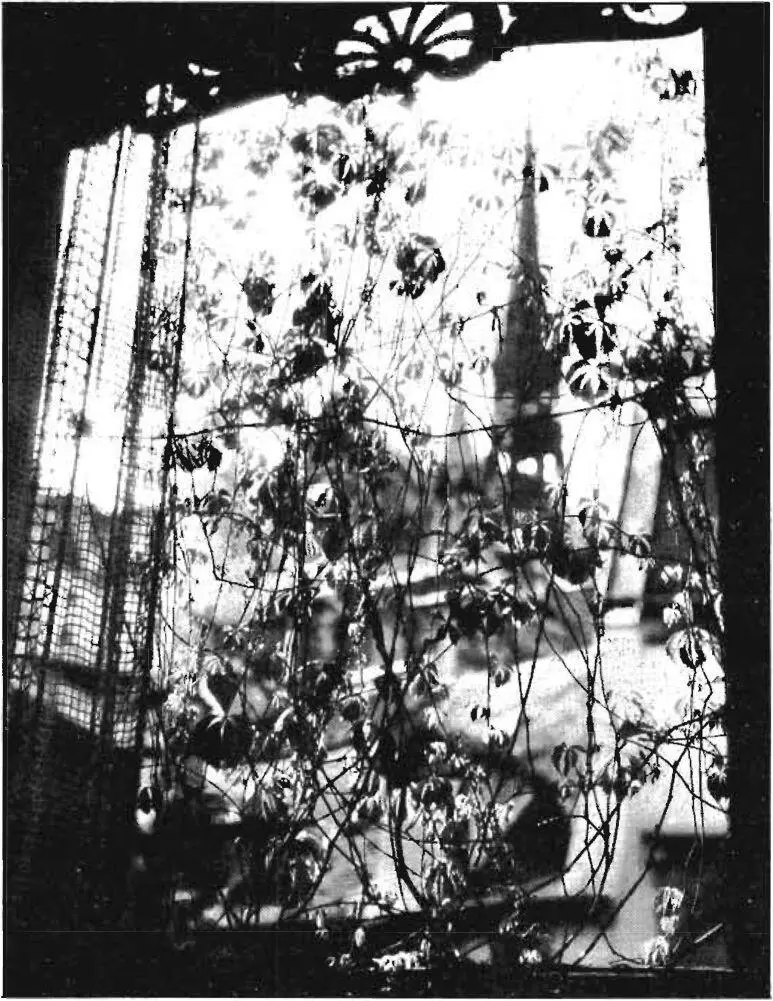Christopher alexander - A pattern language
Здесь есть возможность читать онлайн «Christopher alexander - A pattern language» весь текст электронной книги совершенно бесплатно (целиком полную версию без сокращений). В некоторых случаях можно слушать аудио, скачать через торрент в формате fb2 и присутствует краткое содержание. Жанр: Прочая научная литература, на английском языке. Описание произведения, (предисловие) а так же отзывы посетителей доступны на портале библиотеки ЛибКат.
- Название:A pattern language
- Автор:
- Жанр:
- Год:неизвестен
- ISBN:нет данных
- Рейтинг книги:3 / 5. Голосов: 1
-
Избранное:Добавить в избранное
- Отзывы:
-
Ваша оценка:
- 60
- 1
- 2
- 3
- 4
- 5
A pattern language: краткое содержание, описание и аннотация
Предлагаем к чтению аннотацию, описание, краткое содержание или предисловие (зависит от того, что написал сам автор книги «A pattern language»). Если вы не нашли необходимую информацию о книге — напишите в комментариях, мы постараемся отыскать её.
A pattern language — читать онлайн бесплатно полную книгу (весь текст) целиком
Ниже представлен текст книги, разбитый по страницам. Система сохранения места последней прочитанной страницы, позволяет с удобством читать онлайн бесплатно книгу «A pattern language», без необходимости каждый раз заново искать на чём Вы остановились. Поставьте закладку, и сможете в любой момент перейти на страницу, на которой закончили чтение.
Интервал:
Закладка:
The old time French windows are a stunning example of this pattern. They are narrow', full length upstairs windows, which swing out onto a tiny balcony, large enough only to contain the open windows. When you open them you fill the frame, and can stand drinking in the air: they put you intensely close to the out-
1 101
CONSTRUCTION
side—yet in a perfectly urban sense, as much in Paris or Madrid as in the open countryside.
Therefore:
Decide which of the windows will be opening windows. Pick those which are easy to get to, and choose the ones which open onto flowers you want to smell, paths where you might want to talk, and natural breezes. Then put in side-hung casements that open outward. Here and there, go all the way and build full French windows.
 |
| •§• *5* |
Complete the subframe ofthe casement with small panes(239). . . .
1102
2 37 SOLID DOORS WITH GLASS
. . . this pattern finishes the doors defined by corner doors (196) and low doorway (224). It also helps to finish tapestry of light and dark (135) and interior windows (194), since it requires glazing in the doors, and can help to create daylight in the darker parts of indoor places.
♦J*
An opaque door makes sense in a vast house or palace, where every room is large enough to be a world unto itself; but in a small building, with small rooms, the opaque door is only very rarely useful.
What is needed is a kind of door which gives some sense of visual connection together with the possibility of acoustic isolation: a door which you can see through but can’t hear through.
Glazed doors have been traditional in certain periods—they are beautiful, and enlarge the sense of connection and make the life in the house one, but still leave people the possibility of privacy they need. A glazed door allows for a more graceful entrance into a room and for a more graceful reception by people in the room, because it allows both parties to get ready for each other. It also allows for different degrees of privacy: You can leave the door open, or you can shut it for ac'oustical privacy but maintain the visual connection; or you can curtain the window for visual and acoustic privacy. And, most important, it gives the feeling that everyone in the building is connected—not isolated in private rooms.
Therefore:
As often as possible build doors with glazing in them, so that the upper half at least, allows you to see through them. At the same time, build the doors solid enough, so
1103
that they give acoustic isolation and make a comfortable “thunk” when they are closed.
| solid and with glass |
|---|
 |
Glaze the door with small panes of glass—small panes (239) ; and make the doors more solid, by building them like wall membranes (218). . . .
| 238 FILTERED LIGHT* |
|---|
 |
I 105
. . . the mosaic of subcultures (8) is made up of a great number of large and small self-governing communities and neighborhoods. Community of 7000 helps define the structure of the large communities.
4* 4* 4*
Individuals have no effective voice in any community of more than 5000-10,000 persons.
People can only have a genuine effect on local government when the units of local government are autonomous, self-governing, self-budgeting communities, which are small enough to create the possibility of an immediate link between the man in the street and his local officials and elected representatives.
This is an old idea. It was the model for Athenian democracy in the third and fourth centuries b.c.; it was Jefferson’s plan for American democracy; it was the tack Confucius took in Iris book on government, The Great Digest .
For these people, the practice of exercising power over local matters was itself an experience of intrinsic satisfaction. Sophocles wrote that life would be unbearable were it not for the freedom to initiate action in a small community. And it was considered that this experience was not only good in itself, but was the only way of governing that would not lead to corruption. Jefferson wanted to spread out the power not because “the people” were so bright and clever, but precisely because they were prone to error, and it was therefore dangerous to vest power in the hands of a few who would inevitably make big mistakes. “Break the country into wards” was his campaign slogan, so that the mistakes will be manageable and people will get practice and improve.
Today the distance between people and the centers of power that govern them is vast—both psychologically and geographically. Milton Kotler, a Jeffersonian, has described the experience:
The process of city administration is invisible to the citizen who sees little evidence of its human components but feels the sharp pain of taxation. With increasingly poor public service, his desires and needs are more insistently expressed. Yet his expressions of need seem
. . . even if the windows are beautifully placed, glare can still be a problem—natural doors and windows (221). The softness of the light, in and around the window, makes an enormous difference to the room inside. The shape of the frames can do a part of it—deep reveals (223)—but it still needs additional help.
•J# ♦£*
Light filtered through leaves, or tracery, is wonderjful. But why?
We know that light filtering through a leafy tree is very pleasant—it lends excitement, cheerfulness, gaiety; and we know that areas of uniform lighting create dull, uninteresting spaces. But why?
1. The most obvious reason: direct light coming from a point source casts strong shadows, resulting in harsh images with strong contrasts. And people have an optical habit which makes this contrast worse: our eye automatically reinforces boundaries so that they read sharper than they are. For example, a color chart with strips of different colors set next to each other will appear as though there are dark lines between the strips. These contrasts and hard boundaries are unpleasant—objects appear to have a hard character, and our eyes, unable to adjust to the contrast, cannot pick up the details.
For all these reasons, we have a natural desire to diffuse light with lamp shades or indirect lighting, so that the images created by the light will be “softer,” that is, that the boundaries perceived are not sharp, there is less contrast, fewer shadows, and the details are easier to see. This is also why photographers use reflected light instead of direct light when photographing objects; they pick up details which otherwise would be lost in shadow.
2. The second reason: to reduce the glare around the window. When there is bright light coming in through the window, it creates glare against the darkness of the wall around the window —see deep reveals (223). Filtering the light especially at the
238 FILTERED LIGHT
Читать дальшеИнтервал:
Закладка:
Похожие книги на «A pattern language»
Представляем Вашему вниманию похожие книги на «A pattern language» списком для выбора. Мы отобрали схожую по названию и смыслу литературу в надежде предоставить читателям больше вариантов отыскать новые, интересные, ещё непрочитанные произведения.
Обсуждение, отзывы о книге «A pattern language» и просто собственные мнения читателей. Оставьте ваши комментарии, напишите, что Вы думаете о произведении, его смысле или главных героях. Укажите что конкретно понравилось, а что нет, и почему Вы так считаете.












